Talking SOP May 2009 [PDF, 477.17 Kb] - Tessenderlo Group
Talking SOP May 2009 [PDF, 477.17 Kb] - Tessenderlo Group
Talking SOP May 2009 [PDF, 477.17 Kb] - Tessenderlo Group
Create successful ePaper yourself
Turn your PDF publications into a flip-book with our unique Google optimized e-Paper software.
S u l p h a t e o f P o t a s h n e w s f f r o m T e s s e n d e r l o G r o u p<br />
<strong>May</strong> <strong>2009</strong><br />
<strong>Tessenderlo</strong> <strong>Group</strong> announces<br />
organisational changes within its<br />
Business <strong>Group</strong> Chemicals<br />
In order to be prepared for future business challenges, a number of<br />
organisational and individual job role changes took place at <strong>Tessenderlo</strong> <strong>Group</strong><br />
at the beginning of <strong>2009</strong>.<br />
In this issue<br />
Rice: an essential crop to feed<br />
the world p2<br />
Update: Business <strong>Group</strong><br />
Chemicals’ customer services<br />
team p4<br />
Pol Deturck now leads the Business <strong>Group</strong><br />
Chemicals as Business <strong>Group</strong> Director. He<br />
reports to Frank Coenen, who has been<br />
promoted to Chief Operations Officer of<br />
<strong>Tessenderlo</strong> <strong>Group</strong>.<br />
Pol Deturck, Director Business <strong>Group</strong> Chemicals<br />
The Business <strong>Group</strong> Chemicals is now organised<br />
around four main product clusters:<br />
Fertilizers-Sulphates<br />
Phosphates (Aliphos)<br />
Organic Chlorine Derivatives (OCD)<br />
Chlor-alkali/PVC-MVC.<br />
Creation of Aliphos<br />
The phosphates activities have been clustered in<br />
a new dedicated organisation named Aliphos,<br />
which will operate as an independent unit.<br />
Patrick Losson is leading Aliphos, reporting to<br />
Pol Deturck. He is assisted commercially by<br />
Paolo Cerato as Sales Director and Frank<br />
Ruyseveldt as Marketing Manager.<br />
Aliphos<br />
T H E N A M E I N F E E D I N G R E D I E N T S<br />
New Director for Fertilizers & OCD<br />
Wim Poot will join <strong>Tessenderlo</strong> <strong>Group</strong> on July 1,<br />
as Business Units Director Fertilizers-Sulphates &<br />
OCD, reporting directly to Pol Deturck. Wim<br />
obtained a Masters Degree in Agricultural<br />
Sciences from the University of Ghent and<br />
specialised in Business Administration at the<br />
Insead Business School. He has more than<br />
20 years experience of leading business-tobusiness<br />
sales departments at various European<br />
companies in the food industry.<br />
New commercial organisation for<br />
Fertilizers-Sulphates<br />
Fertilizers-Sulphates activities remain within the<br />
Business <strong>Group</strong> Chemicals. Nicolas White is<br />
now leading the Fertilizers-Sulphates business as<br />
Sales & Marketing Manager, and will report<br />
directly to Wim Poot.<br />
The following have also joined the Fertilizers-<br />
Sulphates team: Denis Clement, responsible for<br />
sales in Latin America, South-East Asia, Greece<br />
and Turkey; Roger Le Long, responsible for<br />
sales in Northern, Eastern and Southern Africa<br />
and West Asia (including the Middle East); Juana<br />
Martinez, responsible for sales in Spain and<br />
Portugal; François Berhocoirigoin, responsible<br />
for sales in France and Western Africa; Jan Mast,<br />
responsible for sales in Continental Europe (from<br />
Benelux eastwards, excluding Italy and Greece,<br />
and including the Nordic countries), as well as in<br />
the former Soviet Union and Canada; and Salim<br />
Ghazal (<strong>Tessenderlo</strong> Kerley), who is responsible<br />
for sales in the Near East.<br />
Michel Marchand, Technical Manager Fertilizers,<br />
is responsible for the technical support offered to<br />
clients, as well as our agronomic activities within<br />
the International Potash Institute (IPI) and the<br />
Sulphate of Potash Information Board (<strong>SOP</strong>IB).<br />
Nicolas White is also responsible for sales in the<br />
USA, Australia, New Zealand and Iran.<br />
Wim Poot, Director Business Units Fertilizers & OCD<br />
Assistance from the Aliphos team<br />
The Fertilizers-Sulphates team is also being<br />
assisted by certain members of the Aliphos team.<br />
In addition to their principal activity of selling the<br />
Aliphos ® product range, the following members of<br />
the Aliphos team are dedicating a part of their<br />
time to Fertilizers-Sulphates sales.<br />
Willie Dawson is responsible for Fertilizers-<br />
Sulphates sales in the UK and Ireland; Lodovica<br />
Boggian is responsible for Fertilizers-Sulphates<br />
sales in Italy; Gert-Jan Visser is assisting<br />
Fertilizers-Sulphates sales in the Benelux region,<br />
particularly in Belgium; and Christophe Luittre is<br />
assisting with Fertilizers-Sulphates sales in France<br />
(particularly in the north-east).<br />
These changes come at a time when all those<br />
involved in the fertilizer business are faced with<br />
difficult market conditions. Our clients can be<br />
confident that <strong>Tessenderlo</strong> <strong>Group</strong> will strive to<br />
work more closely than ever with them in order to<br />
fully understand the difficulties they are facing and<br />
to explore together all possible solutions to get<br />
business moving once again.<br />
SoluPotasse ® GranuPotasse ® Standard <strong>SOP</strong>
Rice: an essential crop to feed the world<br />
Rice ranks second in world grain production after maize, which is partly used for animal feed, and ahead of wheat. With more<br />
than 650 million tons produced on 150 million hectares, rice is the dominant staple food in many countries, providing 20% of<br />
the calories consumed by humans globally. A very large part of rice production is in the hands of small farmers for local<br />
consumption, with exports representing less than 1% of world production. According to the FAO, the USA is the main rice<br />
exporter in the world accounting for 80% of the total tonnage exported.<br />
Rice belongs to the Poaceae family with origins in<br />
Asia. From this wild rice, most countries today<br />
cultivate varieties of the oryza type, which has<br />
around 20 different species, although only two of<br />
them are cultivated.<br />
Oryza sativa is a common Asian rice, originating in<br />
the Far East at the foot of the Himalayas. O. sativa<br />
japonica (or sinica) grew on the Chinese side of<br />
the mountains and O. sativa indica on the Indian<br />
side. The majority of cultivated varieties belong to<br />
these species, which are characterised by their<br />
plasticity and taste qualities.<br />
Table 2 : Main rice production areas<br />
in the world<br />
Table 1: Main rice production and cropping areas in the world<br />
Country Production Area Country Production Area<br />
(1,000 tons) (1,000 ha) (1,000 tons) (1,000 ha)<br />
China 187,040 29,495 USA 8,956 1,112<br />
India 141,134 44,000 Pakistan 8,300 2,600<br />
Indonesia 57,048 12,165 Egypt 6,665 668<br />
Bangladesh 43,504 11,200 Cambodia 5,995 2,542<br />
Vietnam 35,566 7,305 Korea 5,959 950<br />
Myanmar 32,610 8,200 Nigeria 4,677 3,000<br />
Thailand 27,879 10,360 Nepal 3,680 1,439<br />
Philippines 16,000 4,250 Madagascar 3,596 1,300<br />
Brazil 11,080 2,901 Iran 3,500 630<br />
Japan 10,970 1,678 Sri Lanka 3,131 795<br />
Source: FAO <strong>2009</strong> (2007 data)<br />
Source: FAO <strong>2009</strong> (2007 data)<br />
The japonica variety, characterised by short<br />
grains, is usually grown in dry fields in temperate<br />
conditions in the upland areas of Southeast Asia<br />
and the high elevations of South Asia. The indica<br />
variety is cropped mainly in lowland areas, which<br />
are mostly flooded, throughout tropical Asia.<br />
Oryza glaberrima is an annual species originating<br />
in West Africa, covering a large region extending<br />
from the central Niger River delta to Senegal.<br />
Rice cultivation began simultaneously in many<br />
countries more than 6,500 years ago. The indica<br />
variety was probably domesticated in eastern<br />
India, Myanmar and Thailand and the japonica<br />
variety in southern China. The crop is known to<br />
come in a variety of colours, including white,<br />
brown, black, purple, and red.<br />
Rice is widely used to prepare meal and forms the<br />
Table 3: Nutritional content of rice varieties<br />
basis of diets in Asia and part of nutrition in Latin<br />
America and Africa. It contains a high percentage<br />
of carbohydrates and is a valuable source of<br />
potassium, phosphorus and calcium. It also<br />
contains vitamins and iron (see table 3).<br />
Mineral nutrition<br />
Because rice is mostly cropped using traditional<br />
methods, it is frequent to observe unbalanced<br />
Brown Regular Parboiled Precooked<br />
White<br />
White<br />
1/2 cup Enriched Parboiled Enriched<br />
cooked 1/2 cup cooked 1/2 cup cooked 1/2 cup cooked<br />
(98 g) (79 g) (88 g) (83 g)<br />
Water (%) 71.3 54.1 63.4 63.1<br />
Calories 108 103 100 81<br />
Total Carbohydrates (g) 22.4 22.3 21.6 17.5<br />
Fibre (g) 1.8 0.3 0.4 0.5<br />
Protein (g) 2.5 2.1 2.0 1.7<br />
Fat (g) 0.9 0.2 0.2 0.1<br />
Vitamin B (mg) 1.5 1.2 1.2 0.73<br />
Vitamin B1 (mg) 0.09 0.13 0.22 0.5<br />
Vitamin B2 (mg) 0.02 0.01 0.02 0.04<br />
Vitamin E (mg) 0.7 0.04 0.04 0.04<br />
Iron (mg) 0.4 1.0 1.0 0.52<br />
Phosphorus (mg) 81 34 37 12<br />
Potassium (mg) 42 28 32 3<br />
Calcium (mg) 10 8 17 7<br />
Source: USDA 2002<br />
SoluPotasse ® GranuPotasse ® Standard <strong>SOP</strong>
fertilization. It can be cropped on various soil<br />
types. In flooded systems, soils are generally<br />
deep clay with a high cation exchange capacity,<br />
while in rain-fed cultivation soils are often poor.<br />
Standard production (5 to 6 tons/ha) requires<br />
120 kg/ha N, 35 kg/ha P 2 O 5 and 160 kg/ha K 2 O.<br />
Phosphorus is applied before planting and, for<br />
maximum efficacy, nitrogen and potassium are<br />
applied in split applications throughout the<br />
cropping period.<br />
Potassium, a yield component<br />
In flooded systems, rice benefits from the high<br />
availability of potassium in the soil. Under<br />
intensive cropping, however, or in light soils, the<br />
mineral can be easily exhausted. Potassium<br />
content in the leaf should not drop below 2% at<br />
the booting stage in order to ensure enough<br />
grains per panicle and a high 1000 grain weight.<br />
Because the critical stage is in the later part of the<br />
generative phase, potassium deficiency often<br />
remains undetected by farmers.<br />
Mt/ha<br />
Mt/ha<br />
Mt/ha<br />
Graph 1 shows the role of the major elements on<br />
grain and straw yield. Using the missing element<br />
technique, the experiment is a perfect example of<br />
the benefit of balanced fertilization. NPK<br />
application improves the yield by 56% compared<br />
to the control.<br />
Graph 1: Effect of balanced fertilization<br />
on rice production<br />
Source: Egypt 2008<br />
Graph 2: MOP and <strong>SOP</strong> effect on<br />
rice production<br />
Source: Indonesia 2003<br />
Graph 3: SoluPotasse ® foliar spray on<br />
rice production<br />
Irrigation water may also be a source of salinity.<br />
Although potassium chloride (MOP) is widely used<br />
as source of potassium in rice cultivation, in areas<br />
where there is a risk of salinity, it is advisable to<br />
apply potassium sulphate (<strong>SOP</strong>).<br />
Comparing <strong>SOP</strong> and MOP treatments at the<br />
same dose of potassium illustrates the advantage<br />
of <strong>SOP</strong> (Graph 2). Furthermore, <strong>SOP</strong> also<br />
provides the sulphur requirement for standard rice<br />
production.<br />
Benefits of foliar application of<br />
SoluPotasse ®<br />
Because of its fast growth, rice is sensitive at a<br />
critical stage when the roots cannot absorb<br />
enough potassium in a short time. Foliar<br />
application of SoluPotasse ® , <strong>Tessenderlo</strong> <strong>Group</strong>’s<br />
soluble grade of potassium sulphate, contributes<br />
to improved production, therefore, by augmenting<br />
the efficiency of the basal dressing.<br />
Graph 3 shows an example from Egypt. In<br />
addition to a basal fertilization of 57 kg/ha K 2 O,<br />
two foliar applications of SoluPotasse ® were<br />
made, one at flowering and the other 10 days<br />
later. Results from four different locations show an<br />
increase in yield of between 6 - 28% with the foliar<br />
spray. This increase is directly linked to the initial<br />
yield in plots without the foliar spray and means<br />
that foliar applications of <strong>SOP</strong> can help rice<br />
express its fullest potential. When production is<br />
low, the improvement is high (+28% in El Serw 1)<br />
and, as one would expect, when production is<br />
high the amount of the improvement is less (+6%<br />
in El Sharkia 2).<br />
Conclusion<br />
Rice is an essential food in many developing<br />
countries, especially in Asia. On a local scale, rice<br />
production plays an important role in the<br />
economy. Potassium can help to increase rice<br />
production through a better balanced fertilization.<br />
In saline conditions and for foliar application,<br />
potassium sulphate contributes also to a higher<br />
and better rice production, which is essential to<br />
feed the world.<br />
Potash deficiency in rice leaves<br />
Deficiency symptoms include stunted plants with<br />
dark green leaves and short stems, dark rusty<br />
brown spots starting from the leaf tip and later<br />
spreading over the whole leaf, drying of the leaf<br />
tips and margins, and early senescence of old<br />
leaves.<br />
Source: Egypt 2007<br />
Potassium sulphate to control salinity<br />
Rice is extremely sensitive to salinity during the<br />
seedling and early development phases. Yields<br />
are reduced by a decrease in seedling stand and<br />
poorer plant growth. Every unit of electrical<br />
conductivity above 3.0 dS/m in the soil solution<br />
reduces yields by 12%.<br />
SoluPotasse ® GranuPotasse ® Standard <strong>SOP</strong>
Update on Business <strong>Group</strong> Chemicals’<br />
customer services team<br />
Since the fourth quarter of 2008, the customer services team for BG Chemicals has been led by<br />
Wouter Bleukx, formerly Marketing Manager for the group’s animal feed ingredients.<br />
In view of the organisational changes that took<br />
place at the beginning of this year (see article on<br />
page 1). Wouter Bleukx and his team have<br />
reviewed the responsibilities of the various customer<br />
services representatives (CSRs) to ensure that they<br />
continue to offer the best possible service to clients.<br />
The table below indicates the contact details and<br />
responsibilities of each member of the <strong>SOP</strong> team,<br />
headed by Ariane Goovaerts.<br />
“As most customers probably know, <strong>Tessenderlo</strong><br />
<strong>Group</strong> has been working with a centralised<br />
Customer Services Centre since 2007 and we are<br />
convinced this has strengthened our relationship<br />
with them,” comments Ariane. “All our customer<br />
service representatives are responsible for handling<br />
the complete “Order-to-Cash” process: from order<br />
entry and transport right through to invoicing.”<br />
“By using either the<br />
central fax number or<br />
central e-mail address<br />
(see table) we are able<br />
to guarantee immediate<br />
processing of your<br />
orders,” she adds.<br />
Ariane Goovaerts<br />
Fertilizers - Sulphates<br />
Central OTC Fax: +322 647 3692<br />
Central OTC mailbox: inorganics.sales@tessenderlo.com<br />
Country Sales Manager Customer Service CSR direct line<br />
Representative<br />
Western Belgium Gert-Jan Visser (Aliphos) Evy Soentjens +32 13612748<br />
Europe<br />
Jan Mast<br />
The Netherlands Jan Mast Dajana Cotza +32 13612730<br />
Gert-Jan Visser (Aliphos) Maarten Verheyen +32 13612766<br />
France François Berhocoirigoin Danielle Vandeweyer +32 13612747<br />
Christophe Luittre (Aliphos) Sonia Viaene +32 13612759<br />
Italy Lodovica Boggian (Aliphos) Dajana Cotza +32 13612730<br />
Spain/Canary Islands Juana Martinez Annick Sannen +32 13612767<br />
Portugal Juana Martinez Leentje Cardinaels +32 13612751<br />
UK Willie Dawson (Aliphos) Maarten Verheyen +32 13612766<br />
Ireland Willie Dawson (Aliphos) Dajana Cotza +32 13612730<br />
Europe & FSU All other European countries Jan Mast Dajana Cotza +32 13612730<br />
Poland, Former Soviet Jan Mast Maarten Verheyen +32 13612766<br />
Union, Baltic States<br />
Rest of World Turkey, Greece, Denis Clement Jessie Alenteyns +32 13612754<br />
East Asia/Japan<br />
Central America, Denis Clement Leentje Cardinaels +32 13612751<br />
South America<br />
Western Africa François Berhocoirigoin Katrien Bylemans +32 13612753<br />
Jessie Alenteyns +32 13612754<br />
Near East Salim Ghazal (TKI) Katrien Bylemans +32 13612753<br />
Jessie Alenteyns +32 13612754<br />
West Asia Roger Le Long Katrien Bylemans +32 13612753<br />
Middle East, Northern Africa, Roger Le Long Jessie Alenteyns +32 13612754<br />
Eastern Africa, Southern Africa<br />
North America Nicolas White (USA) Katrien Bylemans +32 13612753<br />
Jan Mast (Canada)<br />
Australia, New Zealand, Iran Nicolas White Jessie Alenteyns +32 13612754<br />
More information on <strong>Tessenderlo</strong> <strong>Group</strong>’s activities can be<br />
found at: www.tessenderlogroup.com<br />
<strong>Tessenderlo</strong> <strong>Group</strong> Fertilizers<br />
giving nature a helping hand<br />
w w w . s o p i b . c o m<br />
<strong>Tessenderlo</strong> Chemie N.V.<br />
Heilig Hartlaan 21, B-3980 <strong>Tessenderlo</strong>, Belgium<br />
Tel: +32 13 612211 Fax: +32 2 647 3692<br />
www.tessenderlogroup.com<br />
fertilizers@tessenderlo.com<br />
SoluPotasse ® and GranuPotasse ® are registered trademarks of <strong>Tessenderlo</strong> <strong>Group</strong>.<br />
Thio-Sul ® , KTS ® , CaTs ® and MagThio ® are registered trademarks of <strong>Tessenderlo</strong> Kerley Inc., USA.


![Talking SOP May 2009 [PDF, 477.17 Kb] - Tessenderlo Group](https://img.yumpu.com/37691489/1/500x640/talking-sop-may-2009-pdf-47717-kb-tessenderlo-group.jpg)
![Slides [PDF, 378.59 Kb] - Tessenderlo Group](https://img.yumpu.com/49205668/1/190x143/slides-pdf-37859-kb-tessenderlo-group.jpg?quality=85)
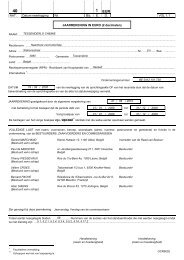
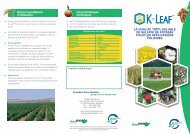
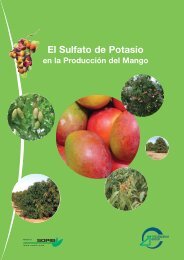
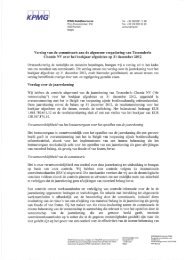

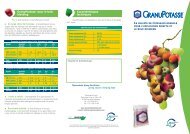
![Investor Seminar Presentation [PDF, 997.72 Kb] - Tessenderlo Group](https://img.yumpu.com/45992427/1/190x143/investor-seminar-presentation-pdf-99772-kb-tessenderlo-group.jpg?quality=85)
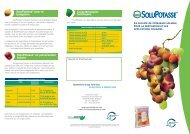
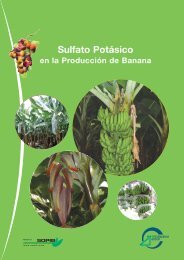
![Talking SOP May 2013 [PDF, 735.49 Kb] - Tessenderlo Group](https://img.yumpu.com/41045284/1/184x260/talking-sop-may-2013-pdf-73549-kb-tessenderlo-group.jpg?quality=85)
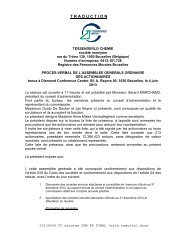

![Talking SOP September 2012 [PDF, 673.84 Kb] - Tessenderlo Group](https://img.yumpu.com/37691694/1/184x260/talking-sop-september-2012-pdf-67384-kb-tessenderlo-group.jpg?quality=85)
![Annual Report 2008 English [PDF, 2.69 MB] - Tessenderlo Group](https://img.yumpu.com/37691533/1/184x260/annual-report-2008-english-pdf-269-mb-tessenderlo-group.jpg?quality=85)